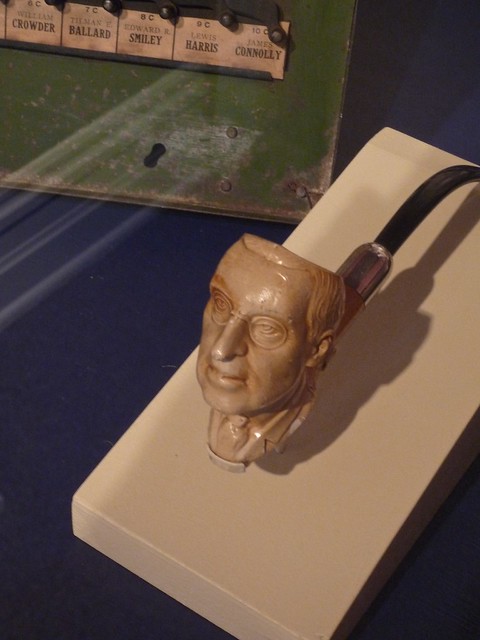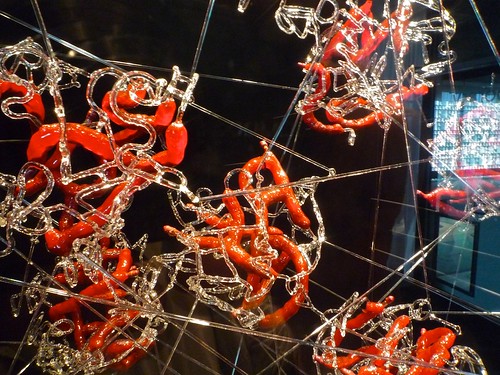I can’t help it. I like to ferret out sources/origins/facts about things. I suppose my favorite part of “scholarship” is the chase, the search for the evidence that might support/refute a concept that has popped into my head. One of my first mentors, R. Paul Yoder, told me that he always wanted to teach an introduction to literature class (core for English majors) built around Conan Doyle and the Sherlock Holmes novels: sort of a frame tale where one read detective stories to become a better literary critic/detective. Laurie Anderson’s claim that in detective stories, the hero is already dead in the beginning and human nature is thereby avoided seems counter-intuitive. It can be argued both ways. (How rhetorical!).
I think it’s easy to make the case that mid-century detectives (Marlowe et.al.) are antiheroes, and the victim (and resultant lust for “justice” in the reader) are indeed the heroes of the tales. The gradual accumulation/revelation of facts is the motive force: human nature, if it intrudes at all, is historical rather than of current importance. This is particularly the case in the CSI-style crime drama, where “science” solves crimes by the incessant (and infallible) revelation of data/facts. It was strange to read the (disputed) Wikipedia page that claims that late-century detective stories are driven by human nature in a way that the early/mid century versions are not (conveniently post-1984, after Laurie Anderson’s observation). The danger of such a claim is that it reeks of a sort of progressivism or evolutionary perspective that usually turns out to be wishful thinking. On the other hand, I find nothing wrong with such a claim when accompanied with evidence— moving it into the realm of historicism.
Of course, I digress. How I got here was a tantalizing moment in Assouline’s HCB biography. He describes Cartier-Bresson at 19 as “a man of principle — but not the same principles as everyone else’s” (23) who failed his baccalaureate exams three times, each time progressively worse, because of poor writing and disinterest in the curriculum. This thwarted his family’s plan for him to join the family business (of thread manufacturing!). Cartier-Bresson preferred contemporary writers, reading them constantly rather than his “proper” studies. His family tried to discourage his literary obsession, but:
It was all in vain, for nothing could keep young Henri from his reading. Family mealtimes were often tense. His father would repeatedly tell him that he must learn to control his impulsive nature, but such reprimands fell on deaf ears. Henri’s instinct always got the better of him, and this was taken for insolence. One day at the table he could no longer contain himself, and dryly responded to his grandfather’s criticism by quoting Hippolyte Taine: ‘One doesn’t ripen, one merely rots away in places.’
The white moustache of the patriarch quivered with rage, but his only reply was to summon the bewhiskered butler: ‘Would you please take Monsieur Henri out of here.’
Pierre Assouline, Henri Cartier-Bresson: A Biography (2005), p. 24
As I find myself in a particularly reflective mood lately, I immediately loved that quote from Hippolyte Taine. I have found myself rotting away in places from time to time. Things that I once knew so solidly slip away. Just who wass Taine and where does this quote come from, I wondered. I never found it, but I found other tantalizing bits reading through some of his books. Turns out Taine was the father of literary historicism. What a delicious contradiction.
Taine’s appraisal of Chaucer is worth considering from his History of English Literature:
Here for the first time appears a superiority of intellect, which at the instant of conception suddenly halts, rises above itself, passes judgment, and says to itself, ‘This phrase tells the same thing as the last—remove it; these two ideas are disjointed—bind them together; this description is feeble—reconsider it.’ When a man can speak thus he has an idea, not learned in the schools, but personal and practical, of the human mind, its process and needs, and of things also, their composition and combinations; he has a style, that is, he is capable of making everything understood and seen by the human mind. He can extract from every object, landscape, situation, character, the special and significant marks, so as to group and arrange them, to compose an artificial work which surpasses the natural work in its purity and completeness. He is capable, as Chaucer was, of seeking out in the old common forest of the middle-ages, stories and legends, to replant them in his own soil, and make them send out new shoots. (130)
. . .
In love and satire he has experience, and he invents; in what regards morality and philosophy he has learning, and remembers. For an instant, by a solitary leap, he entered upon the close observation and the genuine study of man; he could not keep his ground, he did not take his seat, he took a poetic excursion; and no one followed him. The level of the century is lower; he is on it himself for the most part. He is in the company ol narrators like Froissart, of elegant speakers like Charles of Orleans, of gossipy and barren verse-writers like Gower, Lydgate, and Occleve. There is no fruit, but frail and fleeting blossom, many useless branches, still more dying or dead branches; such is this literature. And why? Because it had no longer a root; after three centuries of effort, a heavy instrument cut it underground. This instrument was the Scholastic Philosophy.
Beneath every literature there is a philosophy. Beneath every work of art is an idea of nature and of life; this idea leads the poet. Whether the author knows it or not, he writes in order to exhibit it; and the characters which he fashions, like the events which he arranges, only serve to bring to light the dim creative conception which raises and combines them. (132)
So, after all this I began to wonder about the effect of “postmodern” (as if that were a coherent concept) philosophy upon literature. It would tend to explain Laurie Anderson’s conception that the human nature is superflous in modern genres such as the detective story or science fiction. It would also, in my mind, have a certain explanatory power regarding pervasive images of the detective.
The twentieth century (according to Kenneth Burke, at least) is ruled by the trope of irony and the emergence of detective-as-antihero seems to fit that. We aren’t meant to admire/emulate the hard-boiled detective as a chivalrous figure. Our admiration is ironic. And moreover, if we take lessons from deconstruction the best course of action in most cases is to look not for the human narrative, but for the contradictions inherent in them.
The benchmark figure, then, is not Holmes but Columbo. There’s always that one thing that’s bothering him. These contradictions among apparently established facts then frame the narrative’s resolution. We find the answer when we figure out why stories are not perfect. How very postmodern. Nonetheless, posthumanism seems yet a different project.


